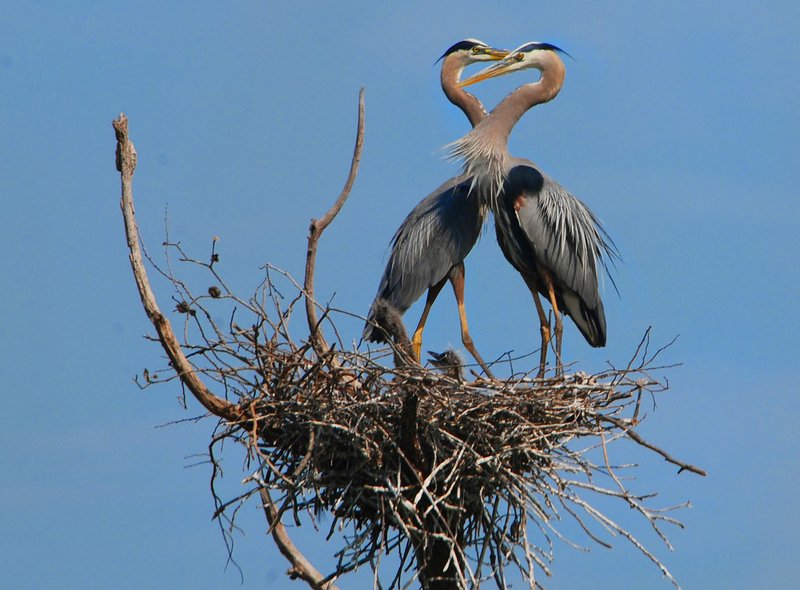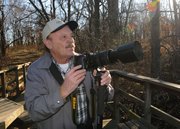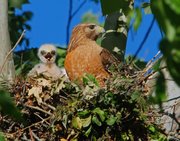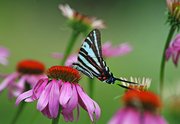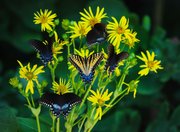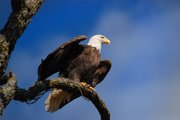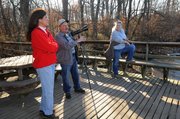GENTRY -- The hiking staff Terry Stanfill carries down the dusty trail always has a camera attached to it.
A monopod is the hiking stick of choice for nature photographer Stanfill, who lives in Coon Hollow outside Decatur.
Tech Talk
Terry Stanfill uses:
Camera: Nikon D7100.
Lenses: Nikon 80-400 mm zoom, his main lens for wildlife photography. Sigma 24-70 zoom, for landscapes. Sigma 105 mm lens for macro shots of insects and wildflowers.
— Staff report
"I am never without my camera," said Stanfill, 62.
He rarely misses a chance to photograph a songbird, fox or a turtle peeping from its shell. Stanfill's photographs are displayed in the gleaming halls of the AEP Swepco Flint Creek Power Plant near Gentry where he worked for 35 years. They're on exhibit at the Gentry Public Library and appear often in the Northwest Arkansas Democrat-Gazette NWA Outdoors section.
Nature photography is a hobby for Stanfill, but his work rivals professional grade. His formula for taking pictures is simple: shoot early, shoot often.
Stanfill is on photo safari almost every day from about 8 to 11 a.m. He has a daily travel route in west Benton County that doesn't change much. His "morning rounds," Stanfill calls the drive. First stop might be the Eagle Watch Nature Trail near the Flint Creek Plant. The parking area is two miles west of Gentry on Arkansas 12. Stanfill is caretaker of the one-half mile path near the plant that leads to a wildlife viewing pavilion at Swepco Lake.
Gravel roads crisscross the countryside around Gentry and Decatur. These byways are Stanfill's photography stomping grounds. He takes pictures of bald eagles, hawks and furry wildlife on his country drives.
"A car makes a great photo blind," Stanfill said.
Critters like deer and eagles are used to seeing cars and pickups. Stanfill takes a lot photos out the window of his pickup.
A hike on the Eagle Watch Nature Trail with Stanfill on Jan. 14 was an education in nature photography. First, Stanfill explained that his monopode lets him get that crisp sharpness in his pictures that may not be there hand-holding the camera. Using a monopode is a lot faster than setting up a tripod, he said.
A bird's song caught Stanfill's ear where the trail enters some woods. He'd spotted a Carolina wren singing its heart out atop a snag of timber. He trained his 400-mm lens on the little wren and fired several frames with his Nikon camera.
He usually hears a bird first, then sees it and moves in to take pictures.
"I'll shoot a few, then try to get in a little closer," he said.
Thanks to digital photography, hikers could view the picture of the singing wren right after Stanfill took it. In most of his bird pictures, there is a catch-light reflection in the eye that gives the bird a life-like look.
"I strive to get that eye reflection. I try to position myself where I can get it," he said. "It might take 50 shots to get it just right in one photo."
That eyeball catch light is in many of Stanfill's pictures of four-legged wildlife, too.
Insects intrigue Stanfill. Bugs make great pictures and are important to people.
"We need insects to survive. If we didn't have pollinators, half of our food would disappear," he said.
Shafts of sunshine melted frost along the trail when Stanfill stepped onto the boardwalk of the trail's pavilion. Linda Brown and two co-workers were at the pavilion looking for eagles. Brown is familiar with Stanfill's photographs from seeing them in the newspaper.
"I'm a kitchen window bird-watcher," she said. "His pictures give me the opportunity to see birds up close. They make me appreciate all that we have around here."
Stanfill said nature photography is a pastime anyone can learn. He started in the early 1990s when he was working as a chemist at the Flint Creek Plant. He was outdoors a lot on the job and saw wildlife all the time.
"I knew I had to get a camera," he said. "It's good therapy. It's something you can do by yourself, and it's better if you do it by yourself."
A person should plan to spend $3,000 to $5,000 for quality gear, Stanfill said. His photo mentor, the late Dave Nolan of Rogers, liked to say, "That sounds like a lot, but it's a heck of a lot cheaper than buying a bass boat."
Stanfill's advice is to buy the best cameras and lenses one can afford. Then get out there, get close and take lots of photographs.
Flip Putthoff can be reached at [email protected] or on Twitter @NWAFlip.
Sports on 02/02/2016

